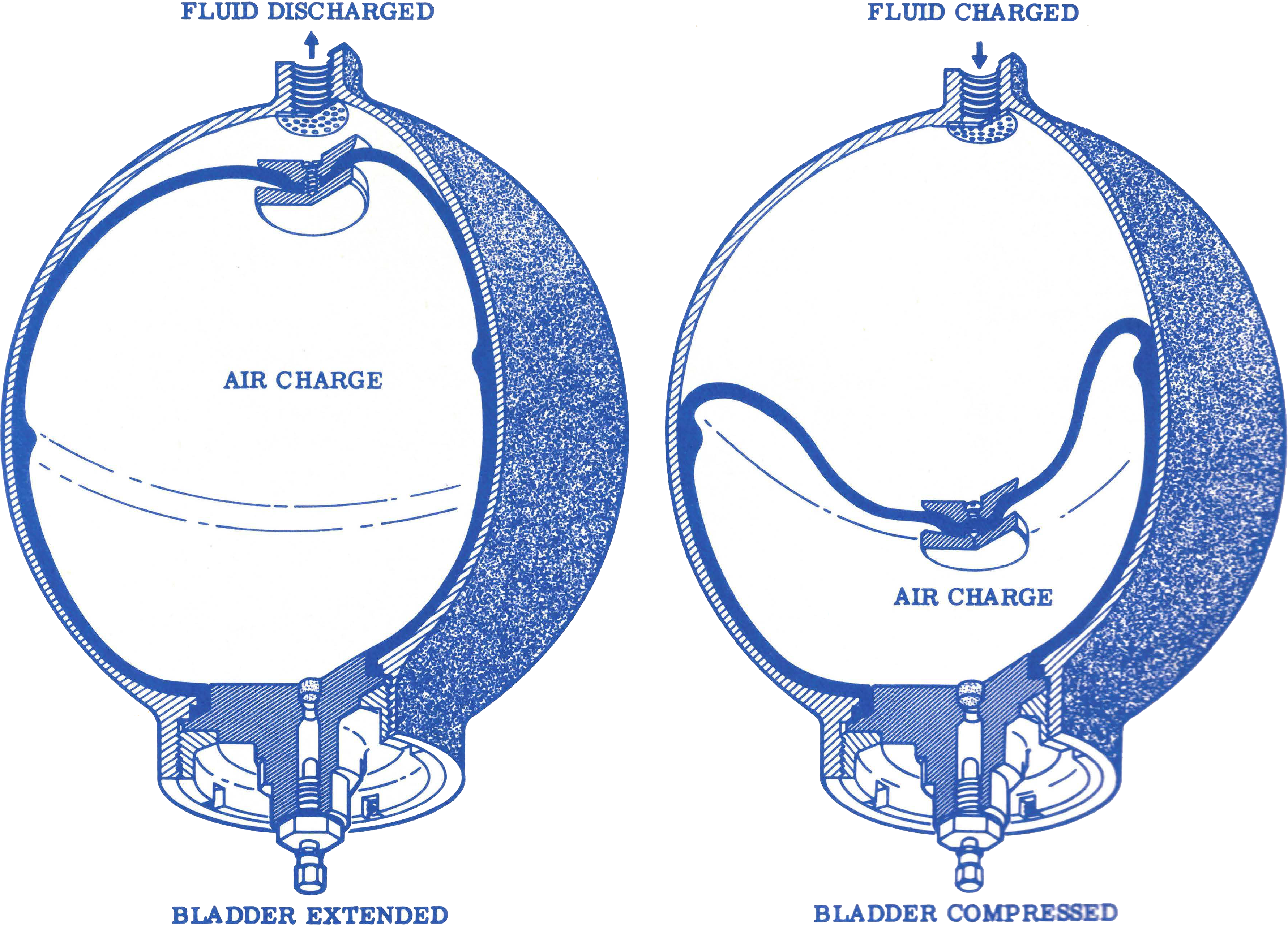Spherical and cylindrical accumulators operate in essentially the same manner. In operation, the air chamber is charged to a pressure lower than that of the system operating pressure. This initial charge is referred to as the pre-charge. To illustrate operation, let’s use the cylindrical accumulator as an example.
Let’s assume the accumulator is pre-charged to 1,500 PSI and will operate in a hydraulic system where the operating pressure is 3,500 PSI. When the pre-charge of 1,500 PSI is applied to the accumulator, and the system pressure is at zero, the piston will actuate to the fluid end of the cylinder. Because the pre-charge is 1,500, the hydraulic system will need to generate a pressure greater than 1,500 PSI before the hydraulic fluid can enter the accumulator causing the piston to move backwards.
As hydraulic fluid fills the cylinder it causes the piston to move backwards compressing the air in the air chamber. At 2,500 PSI, the piston will have backed up several inches, and at 3,500 PSI the piston will be in it’s normal operating position compressing the air until it occupies less than half of the cylinder. It is the natural tendency of the unit to maintain equal pressure on both the fluid side and the air side of the cylinder. As the system pressure increases it pushes the piston back to compress the air which also increases the air pressure, until the air pressure is equal to that of the system pressure.
When the use of hydraulic units lower the system pressure, the pressure on the fluid side of the accumulator will decrease and the higher pressure on the air side will force the piston forward expelling hydraulic fluid from the accumulator to provide fluid for the increase in demand on the hydraulic system.
Many aircraft make use of several accumulators in the hydraulic system. Typically there will be one installed in the main hydraulic system and one in the emergency hydraulic system. There can also be auxiliary accumulators that operate other aircraft systems. Regardless of the number, type and location in the system, all accumulators perform the same function: storing extra hydraulic fluid under pressure, and providing that fluid in times of peak demand or emergency.


